- Pothead
- Posts
- the Italian Prime minister's war on hemp
the Italian Prime minister's war on hemp
and the amazing uses of hemp!
Hey buds…
Last week we covered how illegal pesticides were showing up in California’s ‘legal’ cannabis products. Today, the state is burning.
Yeah, the news cycle must go on, but some topics deserve a bit more attention than others…
Natural disasters causes a type of pain that doesn’t discriminate. It doesn’t care about your politics, opinions or where you fall on the spectrum of humanity (even if you are the type of person to blame wildfires on diversity initiatives).
With this in mind, today we’re bringing you a special issue focused on hemp, including its role in fire-resistant housing.
If you want to support, you can donate directly to those affected here.
P.S. Nearly 1,000 of the firefighters on the frontlines are incarcerated individuals.


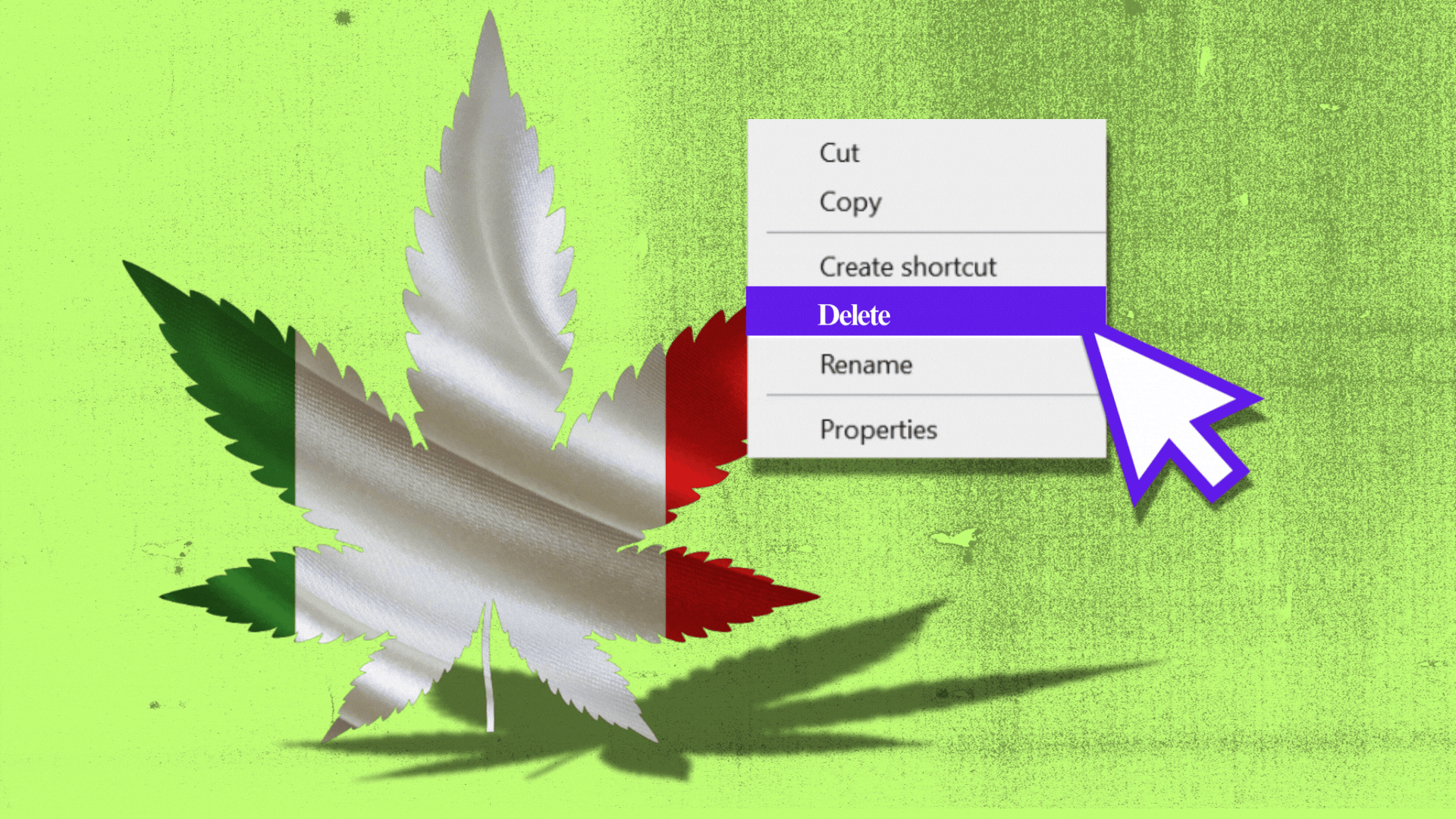
Why does Italy’s prime minister hate hemp?
If the War on Drugs taught us anything, it’s that policies built on fear, racism, misinformation and/or political fuckery, rarely end well.
Yet here we are in 2025, watching Italy’s Prime Minister Giorgia Meloni roll out anti-cannabis measures that take us right back to the 70s.
Here’s why:
👉 Italian Prime Minister, Giorgia Meloni is pushing to ban the production, processing, and trade of ALL cannabis flower. Including industrial hemp (or “light marijuana” as Italians call it). Yes, the kind that won’t get you high no matter how much you puff - since it contains less than 0.3% of THC.
Yes, that’s the same plant generating over €500 million annually and providing jobs for around 30,000 people across Italy—fueling growing industries like textiles, pharmaceuticals, cosmetics, and construction materials.
Yes, that includes CBD—the natural compound that, in just the past few years, hundreds of scientific studies have shown to have powerful medicinal effects for treating chronic pain, nausea, epilepsy, and much more.
The reasoning? That hemp flowers have psychotropic effects and are a danger to public safety. Science says otherwise, but who cares. It’s giving Nixon straight up ignoring the Shafer Commission findings vibes. And since Nixon’s not available for advice on how to send the right ‘signal’, it looks like Trump’s the next best option.
👉To make matters worse, Italy’s updated "Highway Code" is driving the crackdown home...
Drivers who test positive for THC, even at super low levels from CBD products, could lose their license for up to three years and face fines of up to €6,000. Authorities have the right to administer a drug-test roadside too.
No surprise young Italians, eager to start businesses and grow this thriving sector to boost their country’s economy, are already leaving.


Sixteen years after his drug conviction, Conbud funder is building a weed empire in NY. The only thing criminal now? Lack of access to federal tax deductions for payroll and other business expenses cutting his profits in half.
Dr. Marion McNabb, president of the Cannabis Center of Excellence (CCOE) and co-founder of the Cannabis Education Center, gets the green light from federal administrative law judge, to testify at the upcoming landmark Cannabis Rescheduling Hearing.
If you're a cannabis user and want to be part of CCOE’s upcoming study to assess the impact of three undoo® softgel products for:
Relief for feeling uncomfortably high
Refresh for combating brain fog
Reset for resetting THC tolerance
… you can sign up here.

Arro & Sergeant Richard W. Thompson
Florida’s appeals court have confirmed what should’ve been obvious to anyone with a brain: police dogs can’t be the only reason to justify a car search when they can’t even tell the difference between legal and illegal weed. Perfect timing for a little crash course on dog sniffing rights.

STIIIZY is looking to support customers affected by their recent data breach, offering free credit monitoring, fraud assistance, and remediation services for 12 months. The attack, claimed by the Everest cybercrime gang, resulted in the theft of approximately 400,000 personal records including name, address, date of birth, age, drivers’ license number, passport number, photograph, the signatures appearing on a government ID card, medical cannabis cards, transaction histories, and other personal information.
Now, instead of just getting your munchies on DoorDash, you’ll also find hemp-derived THC and CBD products like gummies, drinks, mints, chocolates and honey sticks after the company expanded their on-demand delivery offerings in select states.


Hemp For Victory, But No Victory For Hemp?
Let’s take a quick puff back to the Italian Prime Minister’s attempt to ban all types of cannabis (including hemp) in Italy.
Ironically, this move puts her at odds with one of the few productive policies that came from Italy’s infamous dictator slash fascist, Benito Mussolini. Back during World War II, Mussolini pushed farmers to grow hemp to cut down on textile imports and strengthen the country’s independence.
Italy even became the second-largest producer of hemp worldwide, trailing only the Soviet Union.
Of all the things to undo from his toxic reign, she’s going after the one idea that actually helped the country. Make it make sense.
‘Selection of hemp for seed’ (Selezione canaponi per semi). Bentivoglio, Italy pre WW2 (1930/40’s) #NotANewIndustry
— Canna World (@cannaworld.bsky.social)2024-01-20T21:20:44.063Z
Now, on the other side of the world, a similar story was unfolding in the United States…
With supplies running short due to trade disruptions and the Allies’ desperate need for industrial fiber, the U.S. government turned to a once-thriving crop: hemp. At the center of it was a film produced by the USDA in 1942 called Hemp for Victory.
In just 13 minutes the film did an amazing job of highlighting hemp’s history and its vital role in producing military essentials like rope, cloth, and cordage. It taught farmers modern techniques for cultivating and processing the crop.
The message was clear: hemp was a patriotic crop that could help America win the war.
It sounds like a feel-good moment for hemp, right? You just wait.
After the war, the War on Drugs came roaring in, and hemp was vilified along with cannabis. As if that wasn’t enough, the government outright denied Hemp for Victory ever existed… and when they couldn’t deny it existed, they denied they made it.
Deny. Deny. Deny. Deny.
Around 40 years after the film came to be, pro-cannabis activists like John Birrenbach, Jack Herer, and Christopher Wright spent years chasing it down.
Birrenbach found a reference to the film in a USDA brochure about the war effort propaganda films, only to later discover that copies had been quietly removed from agricultural libraries. Librarians said removal policies meant only the original submitter—in this case, the USDA—could have done it.
After many denials and brick walls, Birrenbach finally tracked it down. A search at the National Archives revealed two reels of Hemp for Victory collecting dust, forgotten but intact. For a small fee, Birrenbach had the film copied to VHS, bringing it back into public view.
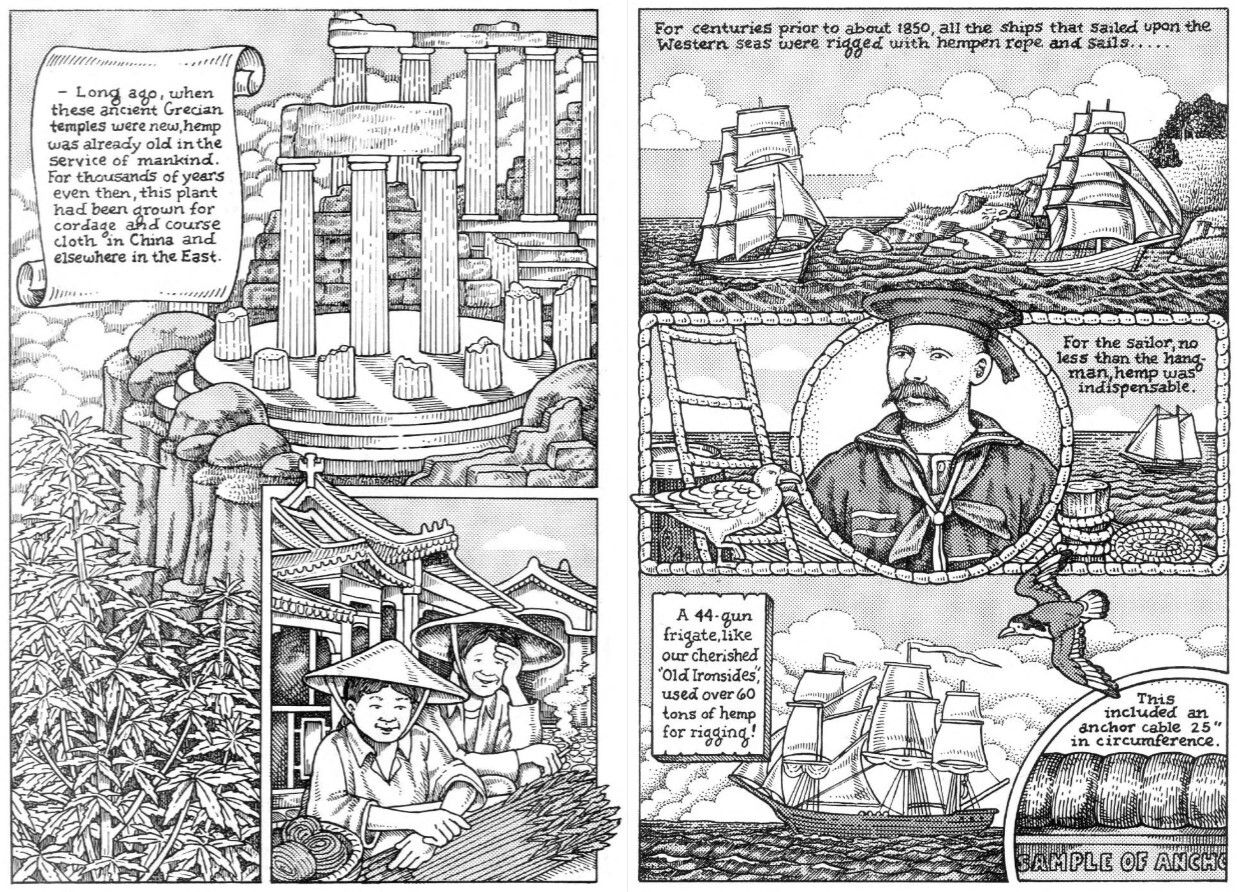
Comic based on the World War II public service film produced by the U.S. Department of Agriculture
So why, when we need it most, is there still no victory for hemp? A plant that could help solve some of today’s biggest challenges…


Here is the breakdown of this 2021 review on industrial hemp:
👉Hemp For Soil Clean-Up:
Growing 1 metric ton (mT) of industrial hemp removes 1.37 to 1.6 metric tons (mT) of carbon dioxide (CO2) from the atmosphere.
On average, a single hectare (ha) of hemp farming produces 2.3 mT of hemp.
Using those numbers, a hectare of hemp cultivation can absorb 3.15 to 3.68 mT of CO2—making it a strong tool for reducing greenhouse gases.
👉Hemp vs. Fiberglass Insulation:
1 m2 of wall insulated with hemp lime can either sequester (store) 10 kg of CO2 or emit up to 6.24 kg, depending on production methods.
In contrast, 1 m2 of wall insulated with fiberglass, emits 47.25 kg of CO2.
👉Hemp For Soil Clean-Up:
Hemp can grow in polluted soils and naturally extract harmful metals like lead, cadmium, and copper from the ground. This process, called phytoremediation, helps clean up contaminated land in an eco-friendly way.
Although, in the study reviewed flax had the highest HM accumulation potential followed by hemp, then cotton, flax stores most of the contaminants in its roots, which are harder to harvest. This limits flax's effectiveness for fully cleaning the soil.
Hemp, however, accumulates most of the metals in its flowers, followed by roots and stems, making it easier to harvest the contaminated material and remove it from the soil.


Today we are talking hemp!

The Mat Chair
A stylish, eco-friendly alternative to the classic plastic shell chair… “It absorbs carbon dioxide, making it a tool for carbon sequestration, resulting in a lower CO2 footprint of the final chair product. In addition, hemp grows at enormous speed, up to four meters in one season, allowing it to be harvested once or twice a year. The entire plant is used, each part of it for different industries, ensuring as little waste as possible.”

Photo by Oskar Proctor
Earth-friendly, vibe-approved, and ready to reshape the way we think about home design. We are having trouble picking out our favorite. How about you?
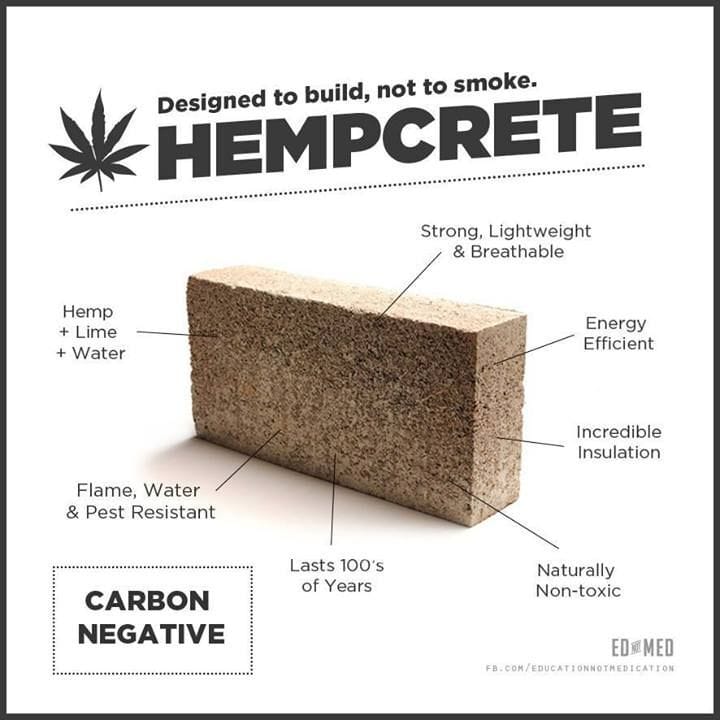
Hemp’s been dragged through the mud thanks to decades of propaganda that lumped it in with, well us, potheads. Spoiler alert: it’s got incredible fire resistance capabilities. It also dissipates flames, maintains its structural integrity, and doesn’t release toxic smoke.
“Unlike what you might imagine, hemp-based materials work very well when exposed to fire. In order to measure the characteristics of each material, tests are carried out following specific rules. In the United States, for example, ASTM E 84-19B test results for hemp concrete showed impressive performance, reaching top marks for "flame spread" and "smoke production" ratings.
In Australia, a fire test has been documented to simulate embers' attacks during wildfires, where there is a potential for fuel to accumulate at the base of the walls. This is a particularly worrying situation in Australia, where large forest fires routinely occur. No damage was observed on the 200 mm thick hemp concrete walls, which were exposed to a 600 mm high flame, burning directly against the wall for a period of 60 minutes.”


That’s it for this week’s puff…
Hope it sparked some ideas (or at least made you look at your hemp with a little more appreciation).
If you’d like to grow our little circle, you can share this newsletter with a friend (or foe) by sharing this link.
Now for the pothead prompt of the week:
What’s the WILDEST misconception you’ve ever heard (or maybe used to believe too) about hemp? 🤔
Drop your answers in the comments. Or don’t.
Either way, catch you next week!



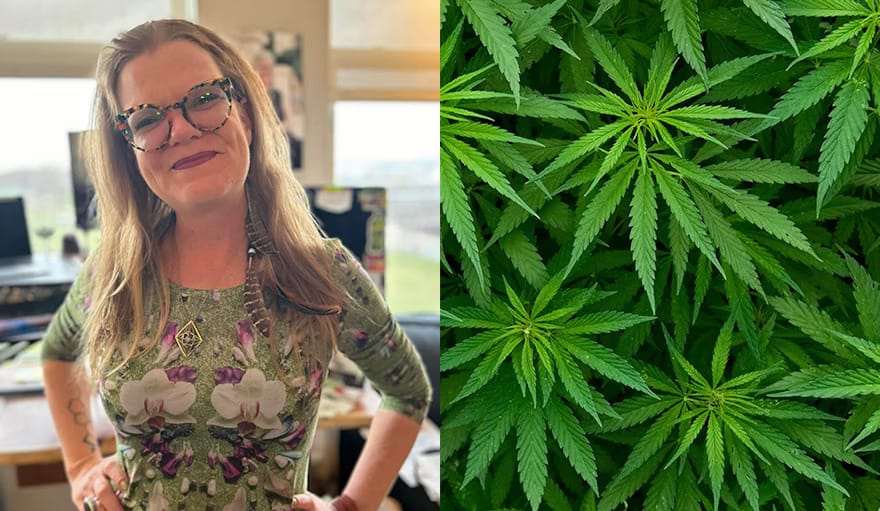

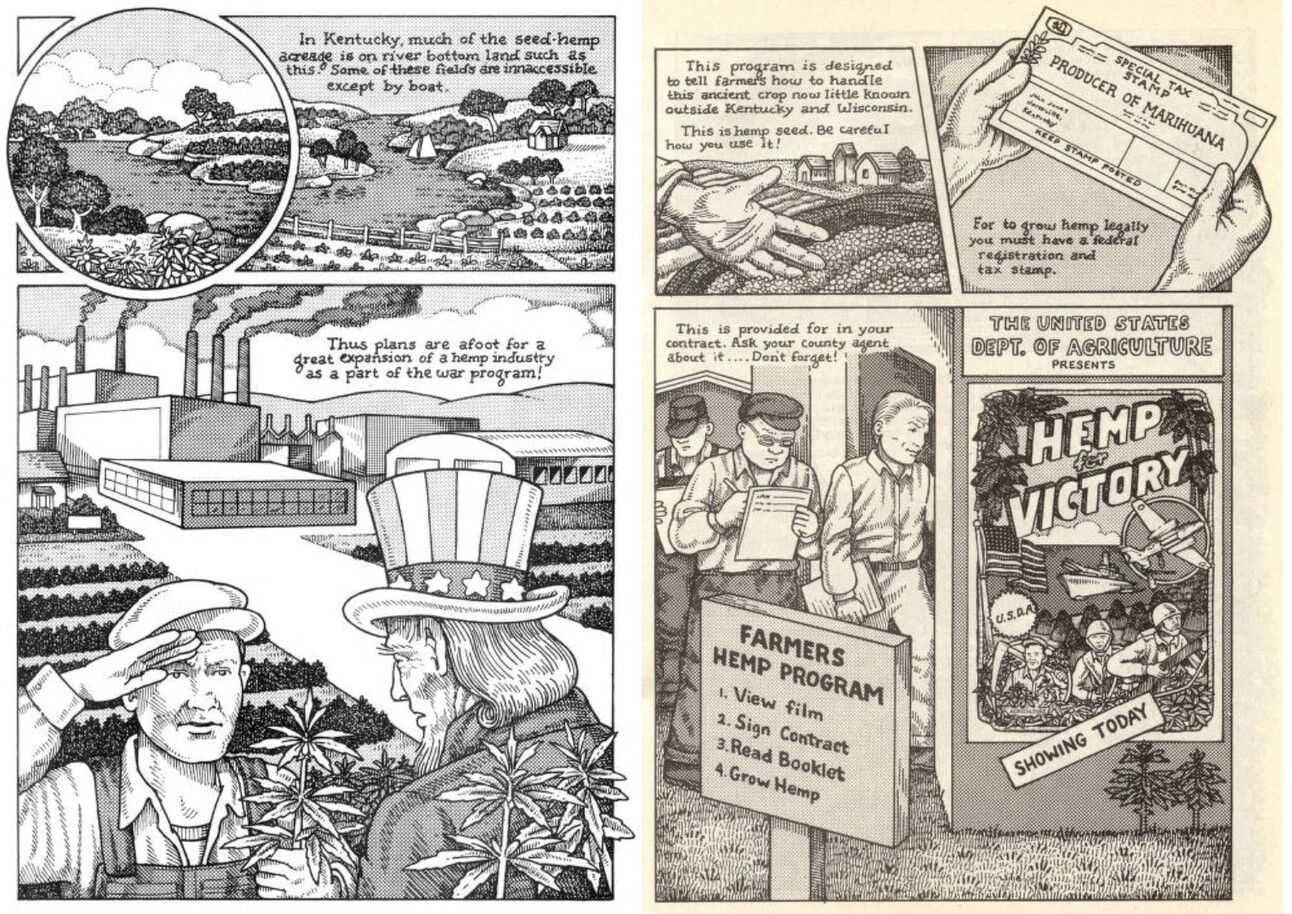



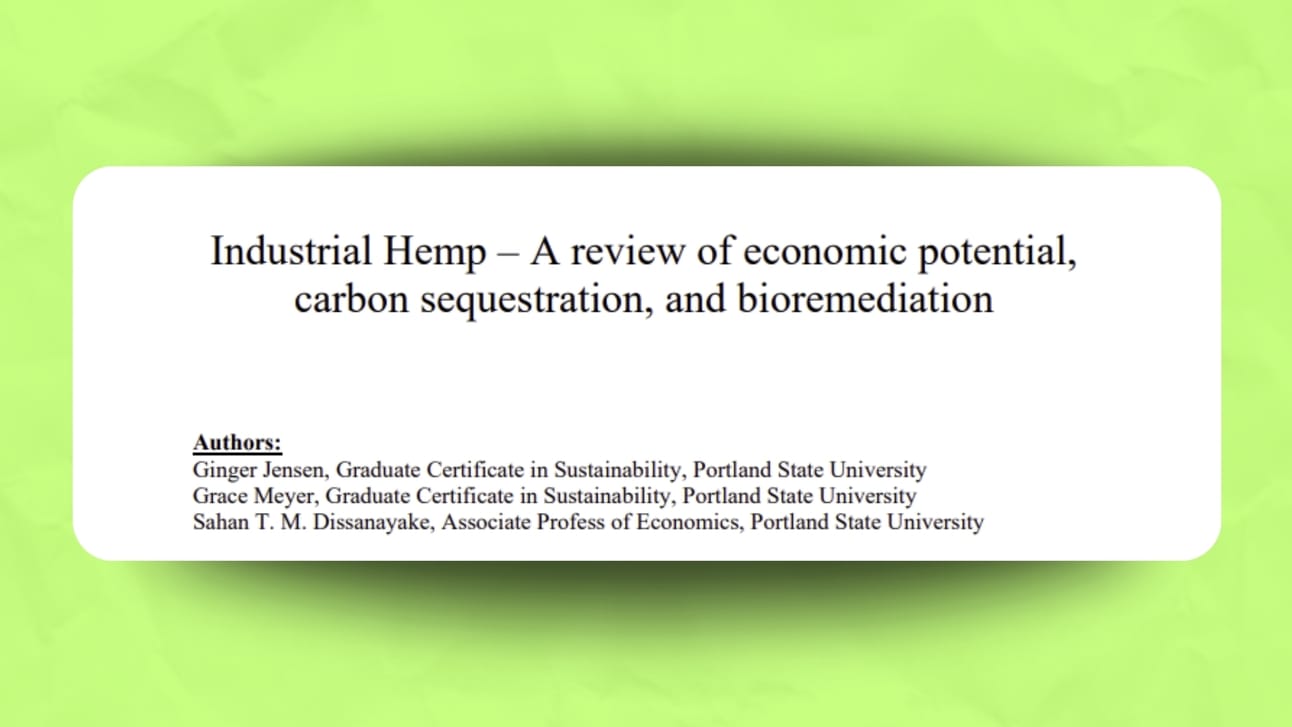
Reply